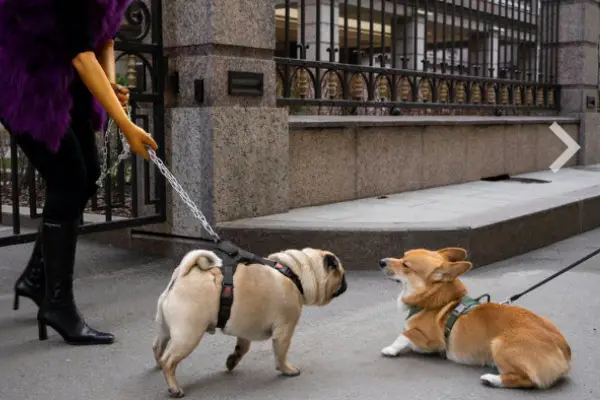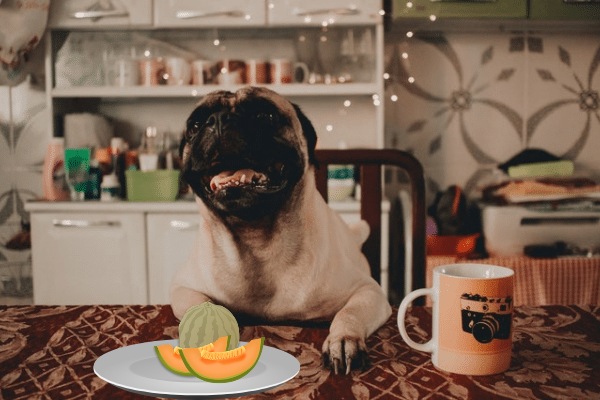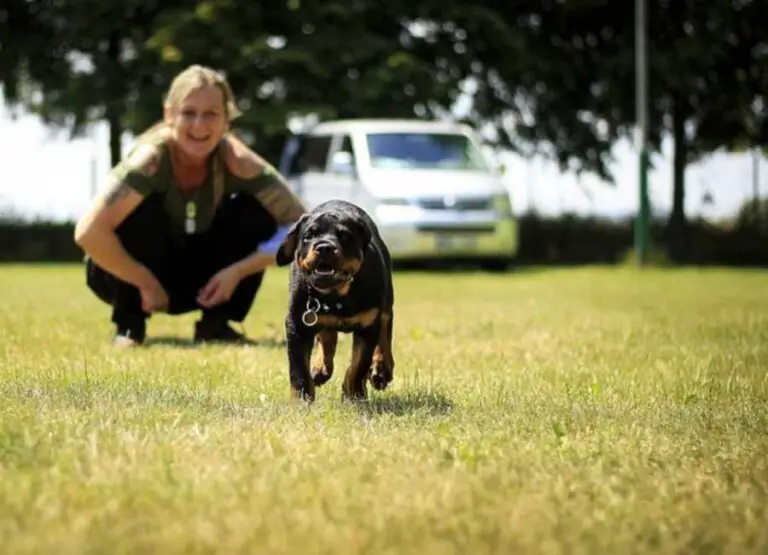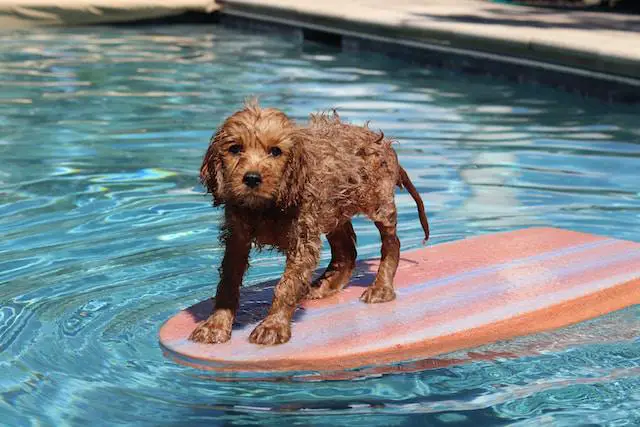Do Pugs Get Along With Other Dogs (12 Cons & Pros)

Pugs are very affectionate towards other dogs, yet people still ask do pugs get along with other dogs! Let’s talk about it!
You will see the most common pros and cons of getting other dogs for pugs, I will highlight the best breed of dogs that do better with pugs.
I will also outline some common ways or steps to introduce a dog to your pug. So if all that interests you then continue reading.
Do Pugs Get Along With Other Dogs
Pugs are social dogs that were selectively bred to be companion dogs, therefore, with their docile personality, they get along very well with other dogs and family members.
However, owing to their small size and the risk of accidentally harming any toy breed when coupled with a large breed, pugs are best paired with other toy dogs.
Pugs can also get along with other large breeds with low energy and a nice demeanor, despite the fact that they are better with other toy dogs.
We recommend obtaining another pug or a toy dog with a similar disposition if you need to bring in another dog.
It is advised that you have both dogs and integrate them from the puppy phases so that they grow up together to achieve the greatest results from maintaining a pug with other dogs.
So…
What dogs do Pugs get along with
The following are some dog breeds that get along well with pugs:
- Pug
- Chihuahua
- French Bulldogs
- Shih Tzu
- Yorkies
- Pomeranian
This is not to say that pugs don’t get along with other medium or large breeds of dogs.
Just like we stated earlier, pugs get along better with other toy dog breeds.
Well… Golden retrievers still make a good companion for pugs!
Let’s talk about the cons of getting a second dog.
Disadvantages of having pug and another dog
Here are a few of the most common reasons why you shouldn’t get another dog for your pug:
- It’s possible that training a pug and another dog at the same time may be challenging.
- Grooming a pug and a second dog is a lot of effort, especially if they both shed a lot of hair.
- A second dog might teach a pug a bad habit.
- It’s possible that having a pug and another dog can cause jealousy and strife.
- Adding a second dog to your home can treble the cost of upkeep for both pets.
- Adding a second dog to your pug’s household might make them more hostile.
- You will have more mess to clean up if you have a pug or another dog.
- Having a second dog, particularly a pug, improves your standard of living financially.
- It takes a lot of effort to walk a pug and another dog.
- Medical bills might increase with getting a second dog for your pug.
- You will spend longer time in obedience training and potty training.
Let’s talk about the pros of getting a second dog.
Benefits of getting a second dog for pugs
Some of the most common benefits of having a second dog for your pug are as follows:
- Getting a second dog can help prevent separation anxiety in pugs.
- Your pug’s socialization will be aided by the second dog.
- Adding a second dog to your household might help with some of your pug’s behavioral issues.
- When pugs have a second dog, they get extra exercise by playing with them other.
- Pug aggression can be resolved by the addition of a second dog.
- Getting a second dog might help your pug avoid boredom and loneliness.
- Getting a second dog is a great method to teach your pug more responsibility.
- The addition of a second dog can improve both canines’ personalized relationship.
- Two dogs can become playmates and companions.
- A second dog might assist you in overcoming your concerns and shyness.
So… How do you introduce a new dog to your pug? Let’s talk about that!
How do you introduce a new dog to pug
When introducing a new dog to your pug, follow these steps:
Step 1: Hide your pug belongings to avoid resource guarding
Look for anything useful to pugs in your home, such as a food dish, toys, or a bed.
To avoid resource guarding, keep anything that belongs to your pug out of sight before moving on to the next phase.
This is to avoid undesired possessive behaviors, as your pug may feel obliged to guard his possessions against the new dog, perhaps resulting in a confrontation.
Step 2: Take a short stroll with both dogs on a leash
Invite a family member or a friend, since it is far easier to arrange the introduction with two individuals than with one.
I propose selecting a neutral environment that your pug cannot claim if your pug is violent and possessive.
Take a short walk with both dogs on leashes, hand over the new dog to your friend, and keep an eye on your pug.
Keep your pug by your side and your friend’s new puppy by his side, then watch how both dogs behave.
Step 3: Reverse positions during the stroll
Allow your friend to go ahead of you and your pug with the new, but maintain a friendly demeanor and avoid worrying since your pug can sense your energy.
Allow your companion to walk in front of you and your pug for two to three minutes, sharing positive energy.
Then switch roles, with you in front of your pug and your friend in the back with the new dog, and repeat for two to three minutes.
Because dogs use their sense of smell to create and sustain bonds, this strategy allows both dogs to get to know one another.
If one of the dogs becomes scared or concerned while walking, switch places until both dogs are quiet.
Allow both dogs to walk alongside each other if they are both fine and active.
If the two dogs get along, it will be clear since none will be wired or aggressive toward the other.
Allow both dogs to play if they are energetic; if they are still cautious, continue walking until they have built a strong bond and are starting to accept one other.
When this introductory stroll is finished, it’s time to head home!
Step 4: Walk both dogs home
Don’t over-pet your dog on the way home to avoid over-excitement and unnecessary activities.
Keep both dogs on a leash and avoid straining the leash since this might communicate bad feelings or energy to both dogs.
Start with something both dogs will like, such as mild exercise or watching dog movies; anything that will aid in their bonding will be good.
Step 5: Setup feeding and playing time
When both dogs are ready to eat for the first time.
If you have a crate, you can put both dogs in their individual crates near one other to reduce unnecessary behaviors.
This can help you figure out whether any of the dogs have food aggression and how to deal with it.
Most importantly, don’t show too much one-sided affection, since this may upset one or both of the dogs.
Start any activity or game that both dogs will participate in, such as retrieving the ball or any other sort of amusement.
You can even show both dogs movies as they sit and watch.
Among other things, make sure you have two beds, two toys, two feeding plates, and two drinking plates.
On the first day, never let both dogs out of your sight.
Take your time and go over each method again if it didn’t work the first time.
Other methods of training should be used in conjunction with obedience training.
For example, teach both dogs how to sit, stay, heel, and paw. All of this should be done at the same time.
Read more about other ways to introduce dogs.
Word of caution
- Separate the dogs for eating in the first several days by utilizing doors, dog gates, or crates.
- Make sure the dogs have quiet places to go where they can get away from each other.
- Examining the body language of both dogs in order to intervene if they become anxious before a fight breaks out.
- Keep a watch on both dogs when it comes to toys and resting spots.
- While the dogs are playing, you’re keeping a tight watch on them.
- Assuring that all of the dogs receive enough exercise at the same time.
- You can teach both dogs to relax by using hand targets and “go to mat” actions.
I hope the information provided on this page answered your question Do Pugs Get Along With Other Dogs.


![Dog Traumatized After Boarding [Full Explanation] Dog Traumatized After Boarding](https://petcreeks.com/wp-content/uploads/2023/04/Dog-Traumatized-After-Boarding-768x555.jpg)



![Do Boston Terriers Bark A Lot [Explained] Do Boston Terriers Bark A Lot](https://petcreeks.com/wp-content/uploads/2022/11/Do-Boston-Terriers-Bark-A-Lot-768x555.jpg)